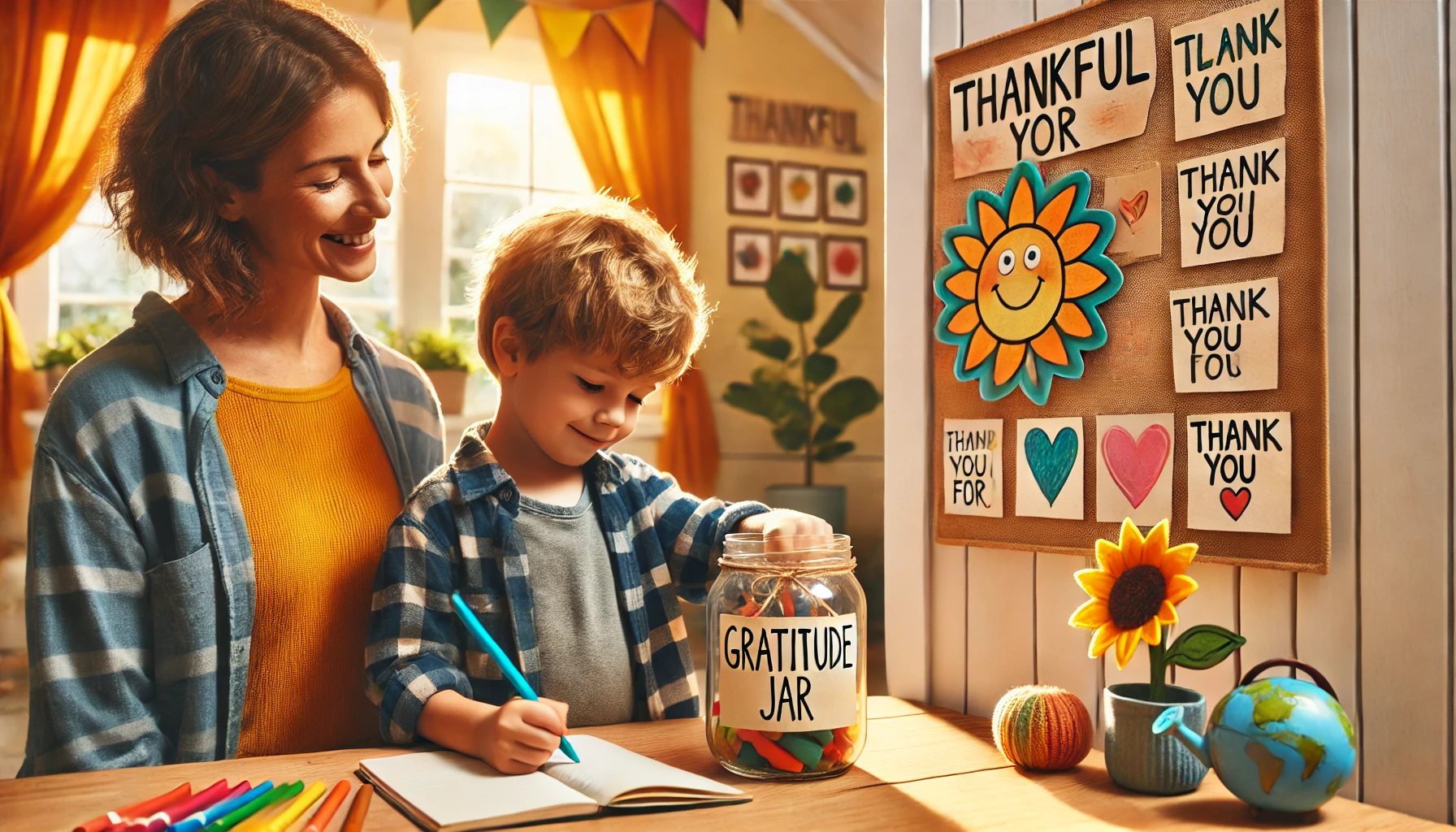How to Teach Young Children About Gratitude and Appreciating What They Have
Teaching young children about gratitude helps them recognize and value the people, experiences, and things in their lives. Grateful kids are more likely to be kind, empathetic, and emotionally resilient. By making gratitude a part of daily routines and modeling thankfulness ourselves, we can help children develop a positive mindset and deeper appreciation for what they have. In this article, we’ll explore simple, effective ways to teach gratitude to young children.
Why Gratitude Matters for Young Children
- Builds emotional well-being – Encourages a positive outlook and reduces entitlement.
- Fosters empathy and kindness – Helps children value the efforts of others.
- Strengthens relationships – Teaches kids to recognize and express appreciation.
- Promotes mindfulness – Encourages children to slow down and notice the good in life.
- Supports resilience – Helps kids stay grounded during challenges.
1. Explain Gratitude in Simple Terms
Young children need clear, concrete examples to understand abstract ideas.
Activity Idea:
- Say: “Gratitude means being thankful for the people and things that make us happy.”
- Give examples: “I’m grateful for you, the sunshine, and our yummy breakfast.”
- Ask daily: “What are you thankful for today?”
What Kids Learn:
- That gratitude is about recognizing good things.
- How to express their appreciation verbally.
- That they have many reasons to be thankful, big and small.
2. Create a Daily Gratitude Habit
Building gratitude into daily routines reinforces it over time.
Activity Idea:
- Make “thankful time” part of bedtime or mealtime routines.
- Use a gratitude jar: write or draw one thing they’re grateful for each day and drop it in.
- Let them decorate a “Gratitude Wall” with notes or drawings of what they appreciate.
What Kids Learn:
- That gratitude is a regular habit, not just for holidays.
- How to reflect on their day in a positive way.
- The value of consistency in building character.
3. Read Books That Model Gratitude
Books provide relatable characters and situations that help kids understand thankfulness.
Activity Idea:
- Read books like Bear Says Thanks by Karma Wilson or Thanks a Million by Nikki Grimes.
- Pause during reading to ask: “What is this character thankful for?”
- Encourage kids to make their own “thank you” book with drawings and stories.
What Kids Learn:
- How others show appreciation in different ways.
- That gratitude can be expressed through words, actions, and stories.
- That books are a source of emotional learning.
4. Encourage Thank-You Notes and Acts of Appreciation
Practicing gratitude in action reinforces the message.
Activity Idea:
- Help your child write thank-you notes or draw pictures for teachers, friends, or family.
- Encourage them to say “thank you” during everyday interactions.
- Role-play showing appreciation: “What could you say when someone helps you?”
What Kids Learn:
- That gratitude includes both words and actions.
- How to show kindness and respect to others.
- That even small gestures can brighten someone’s day.
5. Model Grateful Behavior
Children learn gratitude by watching adults practice it consistently.
Activity Idea:
- Say things like: “I’m thankful for our cozy home,” “I appreciate your help,” or “That was really thoughtful of you.”
- Express thanks in front of your child to people like store clerks, neighbors, or delivery drivers.
- Reflect aloud on your own gratitude throughout the day.
What Kids Learn:
- That gratitude is part of daily life.
- How adults express appreciation in real situations.
- That being thankful is something to be proud of.
6. Talk About Gratitude in Different Situations
Help kids understand that gratitude isn’t just for receiving gifts—it applies everywhere.
Activity Idea:
- After playdates or activities, ask: “What was your favorite part? What are you grateful for?”
- If they’re feeling upset, gently guide their thoughts: “It’s okay to be sad. Can we think of something that made you smile today too?”
- Practice gratitude for nature, pets, meals, and experiences—not just things.
What Kids Learn:
- That gratitude can exist even during tough moments.
- How to find joy in everyday life.
- That thankfulness comes from noticing, not just receiving.
7. Use Visual Tools to Reinforce Gratitude
Kids love visuals—and they help solidify new concepts.
Activity Idea:
- Create a gratitude rainbow—each color represents a type of thing they’re thankful for (family, nature, friends, etc.).
- Use a gratitude calendar where kids draw or write one thing they’re grateful for each day.
- Hang a poster with prompts like: “I’m thankful for… someone, something, a place, a moment.”
What Kids Learn:
- How to organize and reflect on their blessings.
- That gratitude covers many areas of life.
- How visual learning supports emotional growth.
8. Celebrate Gratitude as a Superpower
Help kids see gratitude as something strong and powerful.
Activity Idea:
- Make “Gratitude Superhero” capes and ask: “What kind things can your gratitude powers do today?”
- Share how being thankful makes us happier and more helpful.
- Reward acts of appreciation with hugs, stars, or extra storytime.
What Kids Learn:
- That being thankful is a strength, not just a rule.
- How gratitude connects to kindness and generosity.
- That appreciation makes them feel good inside.
Final Thoughts
Teaching young children about gratitude helps them grow into thoughtful, happy, and kind individuals. Through daily practice, meaningful conversations, and creative activities, parents can nurture a thankful mindset that will serve their children throughout life—helping them appreciate what they have, connect deeply with others, and find joy in every day.
